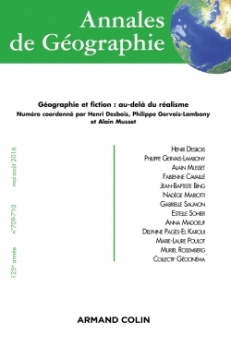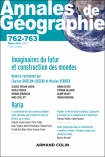
Annales de géographie n° 709-710 (3-4/2016)
Pour acheter ce numéro, contactez-nous
Recevez les numéros de l'année en cours et accédez à l'intégralité des articles en ligne.
L’image animée ne s’applique pas seulement à la présentation des paysages et des sociétés disparues mais à l’interrogation de toute production humaine dans sa vision à la fois anthropologique, sociologique et historique. Dès lors, comment le paysage industriel au travers de l’image animée et de ses genres cinématographiques peut-il être le reflet d’une temporalité révolue ? En quoi sa transmission filmique, tel un héritage, perpétue-t-elle au fil des décennies les représentations de la société ? À travers l’étude d’un « Lieu de mémoire » (Nora, 1984) original : le film, les représentations du paysage minier et sidérurgique, aujourd’hui disparu, s’imposent comme une mise en scène de la mémoire.
The moving picture does not apply just to the presentation of landscapes and societies that have disappeared but also to the the investigation of any human production simultaneously from its anthropological, sociological and historical viewpoints. How therefore can the mining and industrial landscape be made to reflect a bygone temporality, through motion picture and its various film genres ? In what way does the cinematic transmission passing down this temporality, like an inheritance, immortalize the representations of the society over the course of successive decades ? Through the study of an original commemorative site (Nora, 1984) the film, the representations of a mining and steel-making landscape, now disappeared, emerge as a stage setting for portraying memory.
